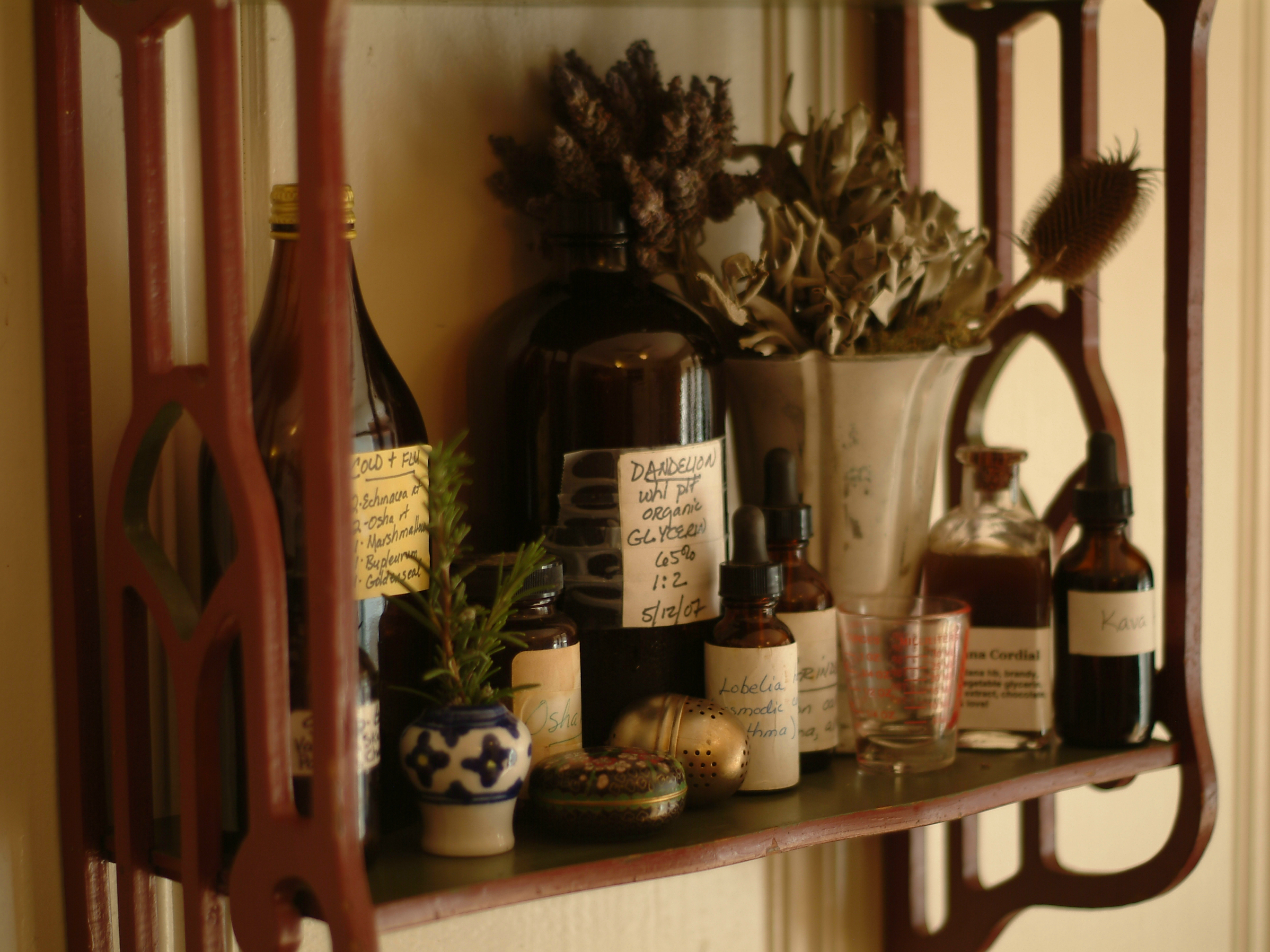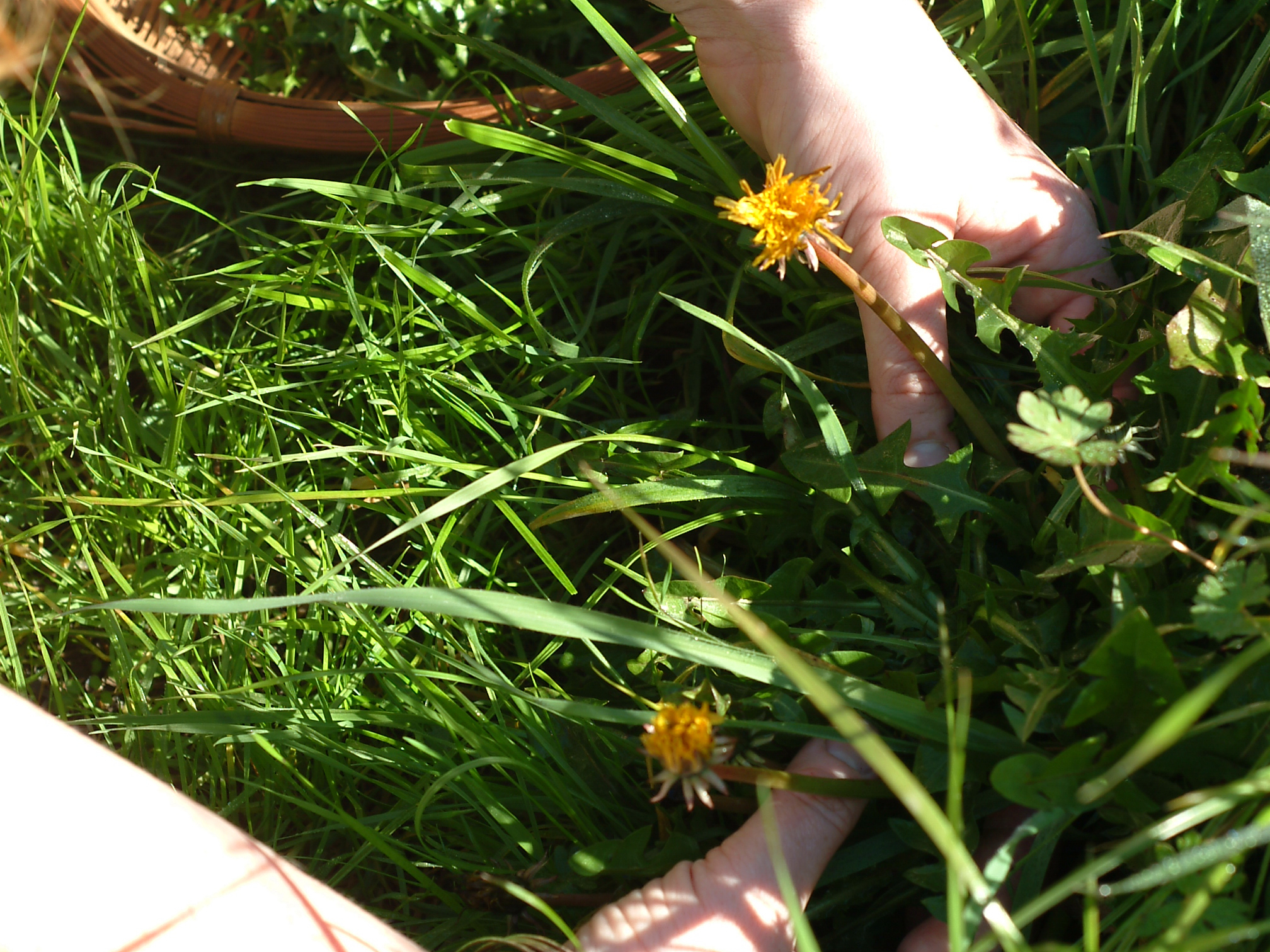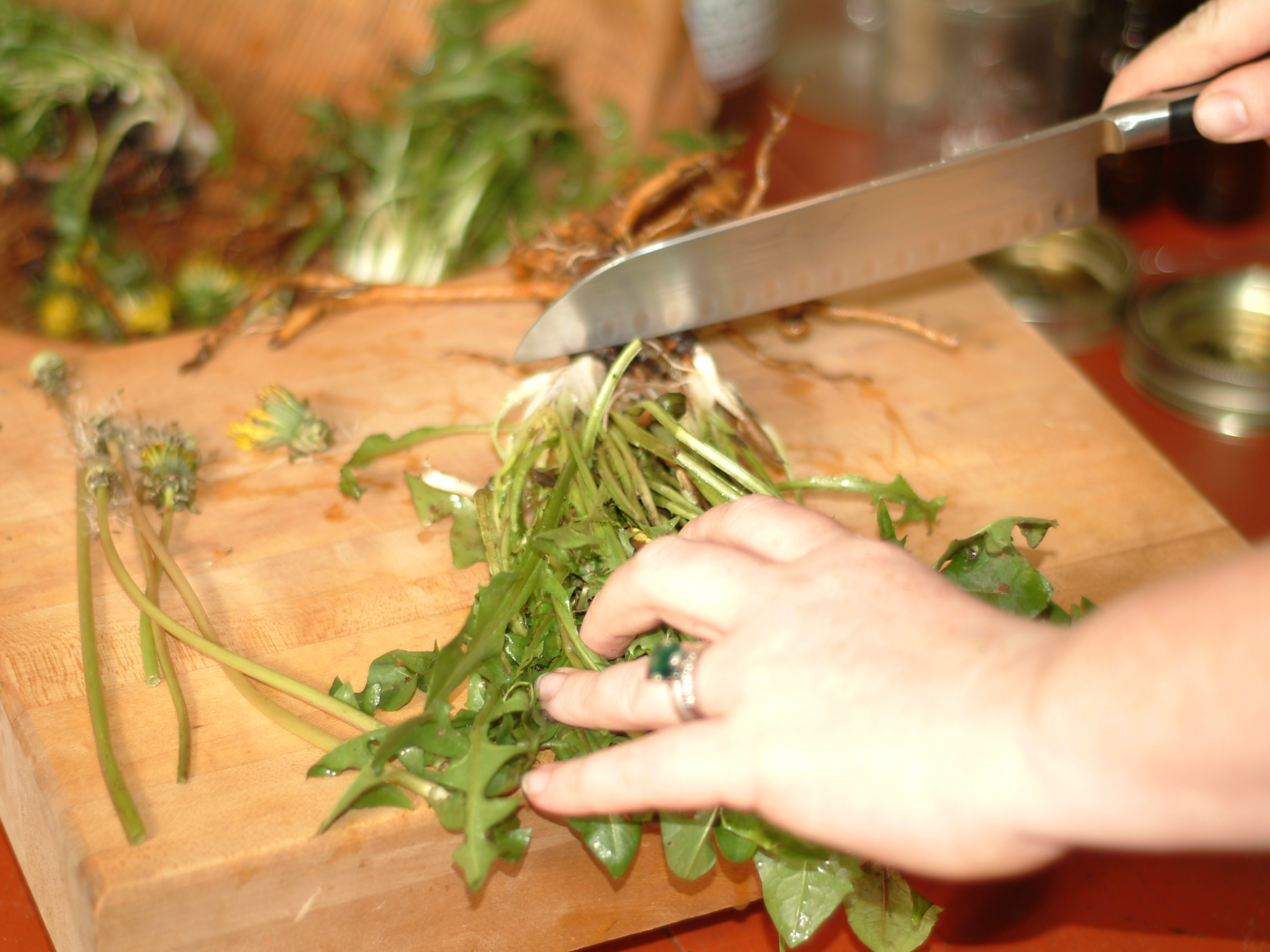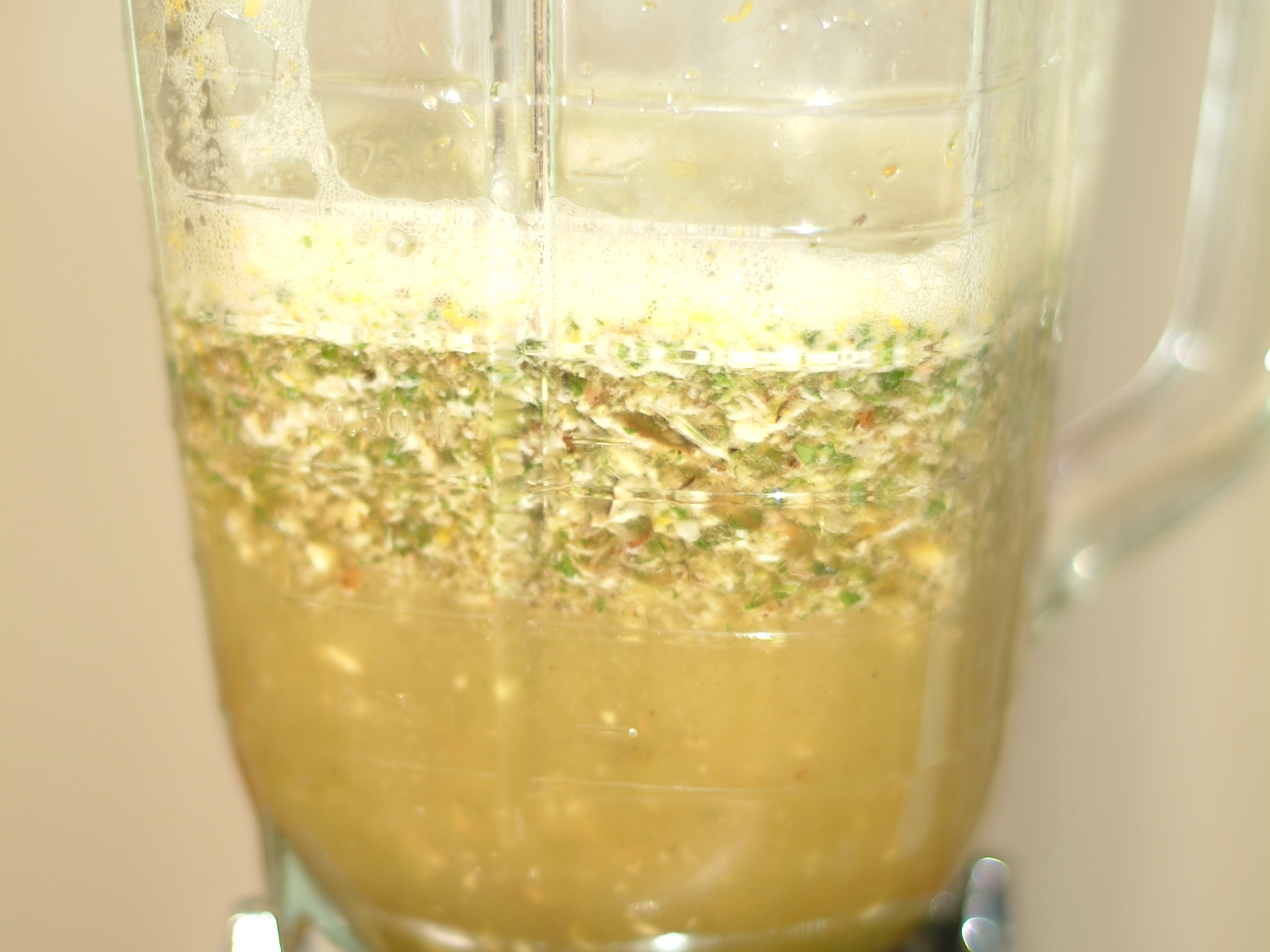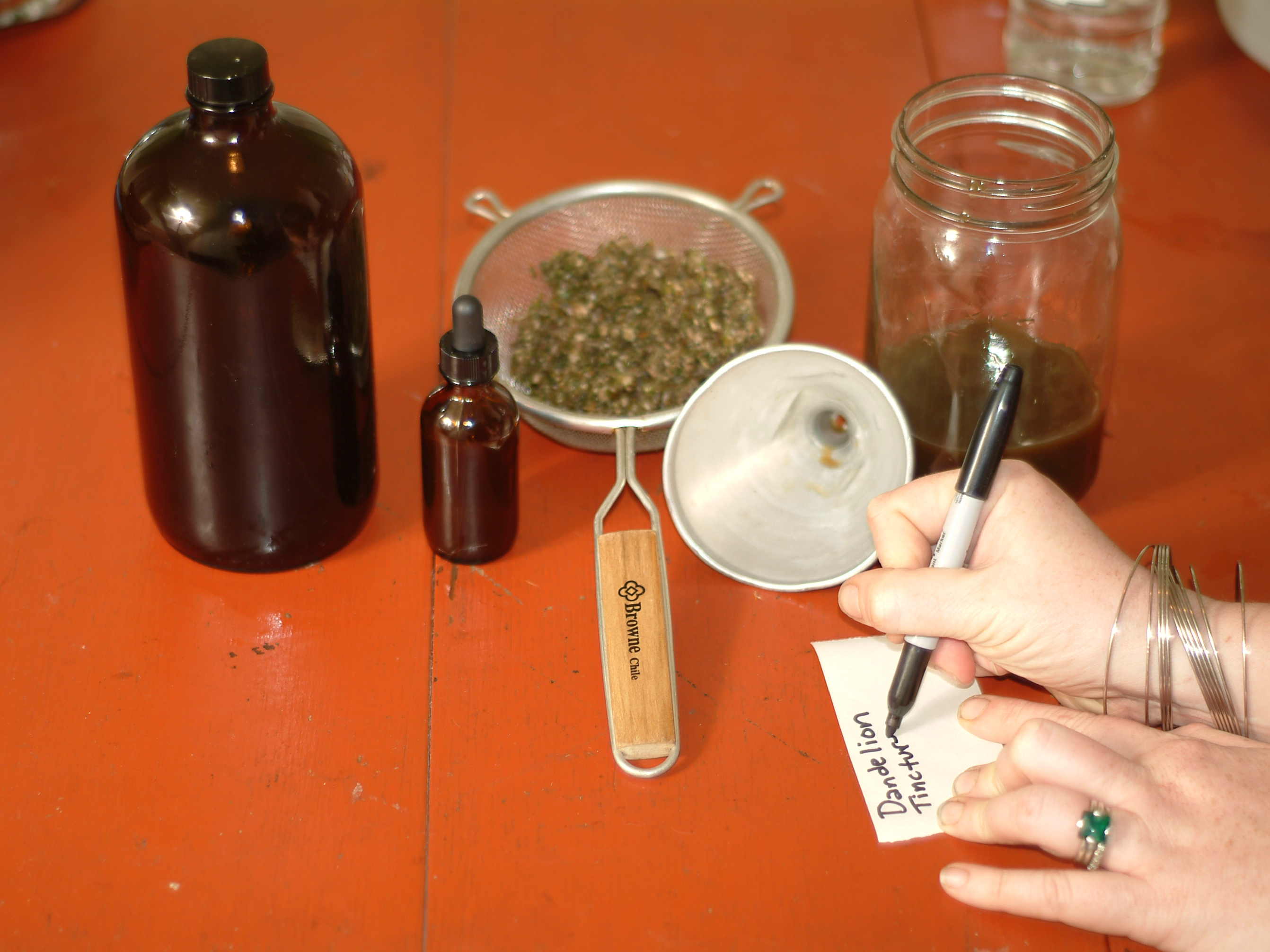Dandelions are the perfect place to start. This common flower has many significant actions on the body. It is a bitter herb and a powerful digestive aid. Taking it in small amounts as a tonic for the body is very safe, and can be quite helpful in curing any number of ailments, including sluggish digestion and even skin breakouts. It’s often seen in salads or in the ever-popular dandelion wine.
We’ll be making 3 types of tinctures with dandelions: alcohol, glycerin, and vinegar. Before you start taking a tincture, I recommend, nay, insist, that you learn about the properties of herbs and the recommended dosages of tinctures. There are many excellent books and websites available on the subject. It’s a wonderful way to apply the do-it-yourself spirit to your health. Check out the list of resources here.
Find the perfect dandelion, and dig up the whole thing. The roots of dandelions are long, strong, and twisting. Do your best to get as much root matter as possible. If some of the root happens to break off, don’t fret; the bit left behind will grow into a whole new plant. At this point, hippies, witches, and shamans will thank the plant for giving up its life to create healing medicine. Although it’s fringe behavior, and talking to plant spirits makes you a weirdo, can it really hurt to express gratitude to Mother Nature?
Otherwise, shake the dirt off the root ball and huck your plants into a basket: flower, seedpod, leaves, roots, and all.
In my research, I found that using the whole plant gives you the most complete tonic, but if you like, yours can be just root, just leaf, or just flower. In this example we use it all, even the spent flower heads that went to seed. The plants will be dirty. Rinse, rinse, rinse them.
After the dandelions have been cleaned, start chopping them up. Chop the roots first. The hard, dark root bark will part to reveal pure, white flesh. Juicy, milky sap will ooze out. That’s the good stuff. Next, chop the leaves and stems into bits as well.
I didn’t use a knife for the flower heads. Instead I waited until right before I was going to use them, then I picked them apart with my fingers. I like pulling petals off flowers — it’s fun!


